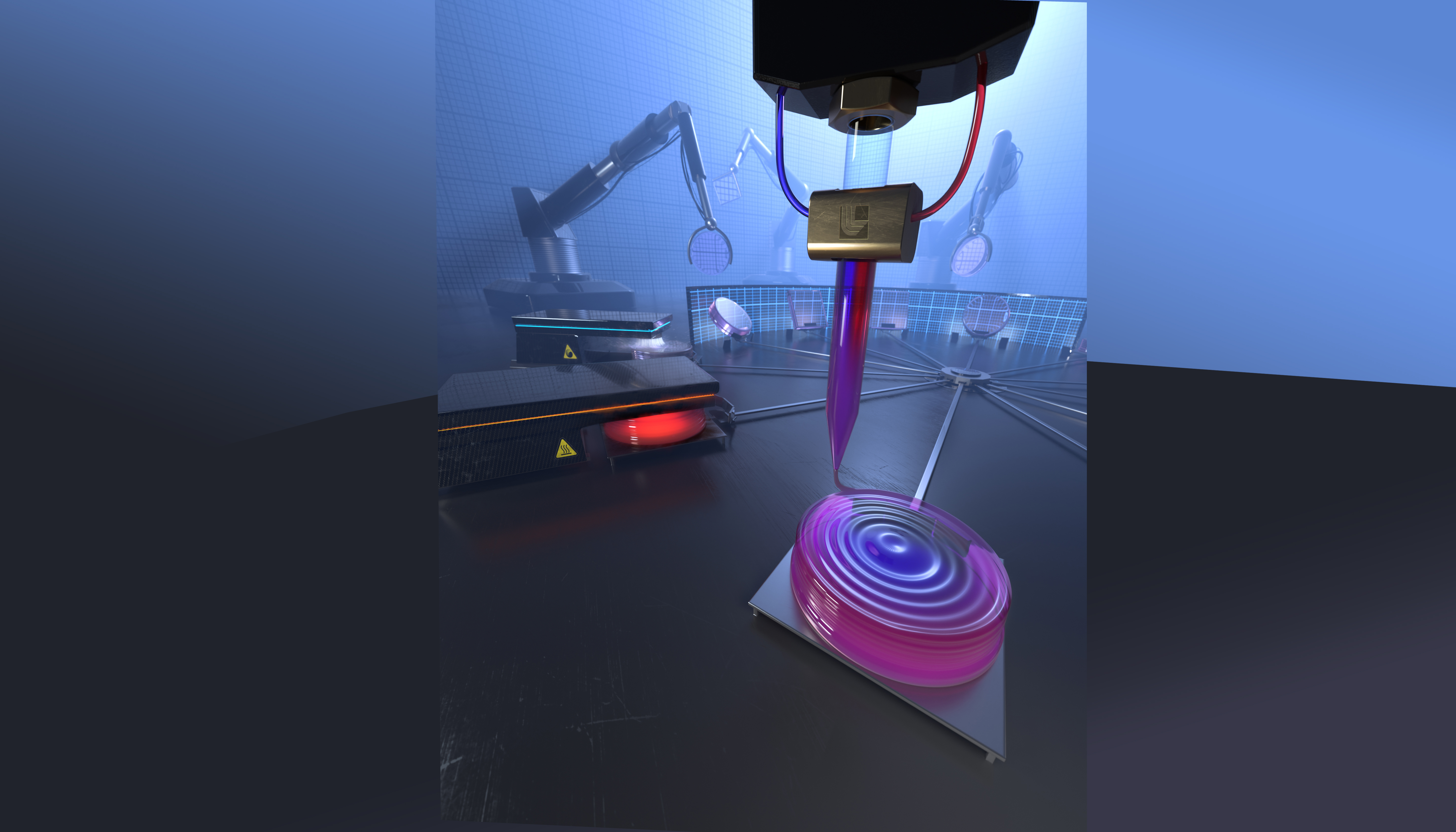A team of researchers from Lawrence Livermore National Laboratory (LLNL) have used multi-material 3D printing, namely direct ink writing (DIW), to fabricate highly customized gradient refractive index (GRIN) glass optics.
The approach allows for a number of optical functions to be programmed directly into flat glass components – functions that would otherwise require curved lenses. The LLNL scientists believe their approach can offer previously unseen design flexibility for stable glass-based parts, and see potential applications in military optics and VR eyewear.

GRIN optics
GRIN glass optics are an alternative to common conventionally finished optics, in that their material composition inherently contains a spatial gradient. As a result, a gradient can be observed in a GRIN optic’s refractive index, meaning there are variations in how light travels through the medium at different points. On the outside, GRIN lenses can have completely flat surfaces, but bend light and perform advanced functions similarly to a specialized curved lens.
The most basic example of a GRIN optic in nature is the eye lens, which changes its refractive index based on ambient light levels and the distance of an observed object. While there are mechanical variations at work, many species’ eye lenses change their refractive indices via concentrations of structural proteins, which can form gradients for different focal points.

Multi-material DIW for advanced optics
At its core, the experiment involved actively controlling the ratio of two glass-forming inks in a paste-like blend. The various blends were then deposited as raw 3D printing materials with the DIW setup, and further densified to turn them into glass. As a final step, the LLNL team finished the prints via conventional optical polishing to produce usable lenses. Rebecca Dylla-Spears, LLNL scientist and lead author of the study, explains: “The change in material composition leads to a change in refractive index once we convert it to glass.”
The novel approach had given the team a new way of fully spatially controlling the components of the final lens, enabling the integration of multiple qualities such as focus and vision correction simultaneously. By implementing these features at the material level, the size of the lens and overall weight of the optical system can be reduced. Since the refractive index can be closely controlled, curved optics can also be replaced by flat lenses altogether, reducing finishing costs and allowing for easier assembly in complex optical systems.
Dylla-Spears concluded: “This is the first time we have combined two different glass materials by 3D printing and demonstrated their function as an optic. Although demonstrated for GRIN, the approach could be used to tailor other material or optical properties as well.”

Further details of the study can be found in the paper titled ‘3D printed gradient index glass optics’. It is co-authored by Rebecca Dylla-Spears et al.
In a similar study earlier this year, Researchers from the ICMCB-CNRS laboratory and the University of Bordeaux developed a method of 3D printing phosphate glass via FDM technology. By first pulling the glass filament using a fiber drawing tower, the researchers were able to extrude complex geometries while maintaining the photoluminescence properties of the material.
Elsewhere, scientists from ETH Zürich, Switzerland, have previously 3D printed glass objects using a specialized resin and Digital Light Processing technology. The method leverages the photopolymerization-induced phase separation of hybrid resins containing plastic and organic molecules, enabling complex glass parts with high spatial resolutions and multi-oxide chemical compositions.
Subscribe to the 3D Printing Industry newsletter for the latest news in additive manufacturing. You can also stay connected by following us on Twitter and liking us on Facebook.
Looking for a career in additive manufacturing? Visit 3D Printing Jobs for a selection of roles in the industry.
Featured image shows an array of polished, 3D printed gradient refractive index lenses. Photo via LLNL.



